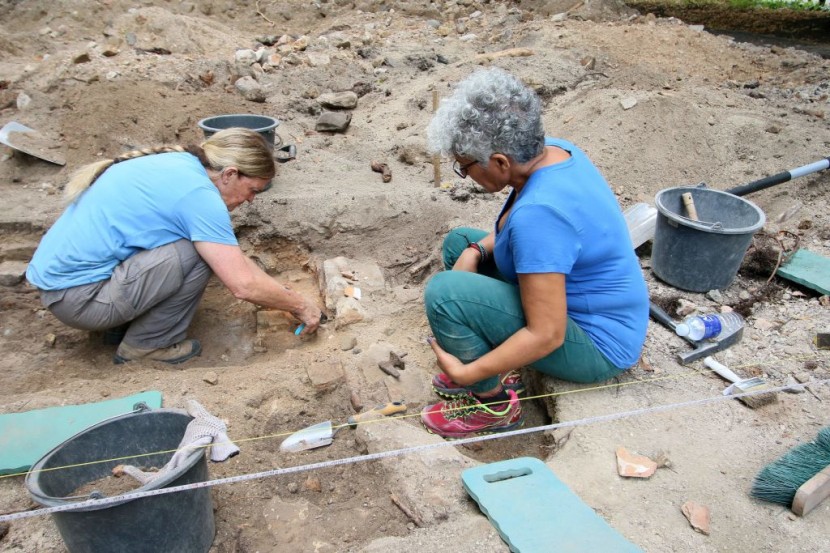
A 2,100-year-old burial containing an Aphrodite 'priestess' was discovered by Russian archaeologists on the Black Sea Coast.
An Aphrodite Priestess' Grave Discovered
The discovery of an Aphrodite priestess lying in a 2,100-year-old burial along the Black Sea coast in the northeastern sector. Russian archeologists have dug up a highly detailed silver medallion of Aphrodite, a Greek goddess. It was found lying in the 2,100-year-old grave of a young woman suspected to be a priestess, reported Live Science.
On inspection, the artifact has only 10, not 12 or twelve, of the zodiac signs, which indicates religion in this era.By all signs, the archeologist thinks the grave is of a worshipper of the goddess of beauty and love, though it needs more proof. Other artifacts found in the burial are rings, silver earrings, and other items considered valuable in Aphrodite's worship.
Nikolay Sudarev, an archaeologist with the Russian Academy of Sciences, who was part of the find, added that the woman with the medallion is a priestess. Instead, the person and the items were more linked to worshipping Aphrodite as a cult, as he proposed, per Research Gate.
Warrior Grave Found Near 2,100-Year-Old Burial
The burial site of an Aphrodite priestess from 2,100 years ago is just one of several noteworthy major discoveries this summer on the Taman Peninsula, east of the Crimean Peninsula and halfway between the Black Sea Coast and the Sea of Azov.
Scientists also discovered the grave of a warrior entombed approximately in the fourth and sixth centuries A.D., roughly 500 years after the earlier grave; beside it was a large iron sword that suggests a Persian influence.
These discoveries establish the existence of the ancient Greek colony city of Phanagoria and illustrate how the city progressed in later centuries.
Based on a statement issued by the Volume Delo Foundation, a non-profit established by Russian billionaire and industrialist Oleg Deripaska, which has endorsed research at the university since 2004. Deripaska was affected by sanctions imposed by the US, which he called unfounded after a court case in 2019.
According to Ruben Bunyatyan, a spokesperson for the foundation, the researchers are also doing underwater excavations. The ancient city is about a third flooded.
Seaside City on the Black Sea
Based on the ancient Greek historian Hecataeus of Miletus, Phanagoria was established in the sixth century B.C when it was sacked around 540 B.C. by refugees from Teos, a Greek city on the shoreline of Anatolia (modern-day Turkey) by Cyrus the Great, the Persian king. Sudarev states the cities were inhabited mainly by Greeks between the 6th and 2nd centuries B.C. and that the Greeks had mixed with barbarians over time to form a mixed people.
The medallion found should have the embossed head, shoulders, and hands of the goddess he and archaeologist Mikhail Treister described in the following iconic images. Missing two Zodiac signs, Aquarius and Libra, from the other symbols is very odd. Based on the report by Haaretz, an Israeli paper that explained the added zodiac is the Aphrodite Urania in the heavens, but for the earth Aphrodite Pandemos, it stated.
It might point to astrology and heavenly bodies that influenced activities on earth during ancient times. It is also the first example of the zodiac in the Greek world, originating in Ptolemaic Egypt.
Whether it's an Aphrodite priestess in a 2,100-year-old-burial found on Black Sea Coast in Phanagoria is not sure because of a mixed population in intervening centuries.








